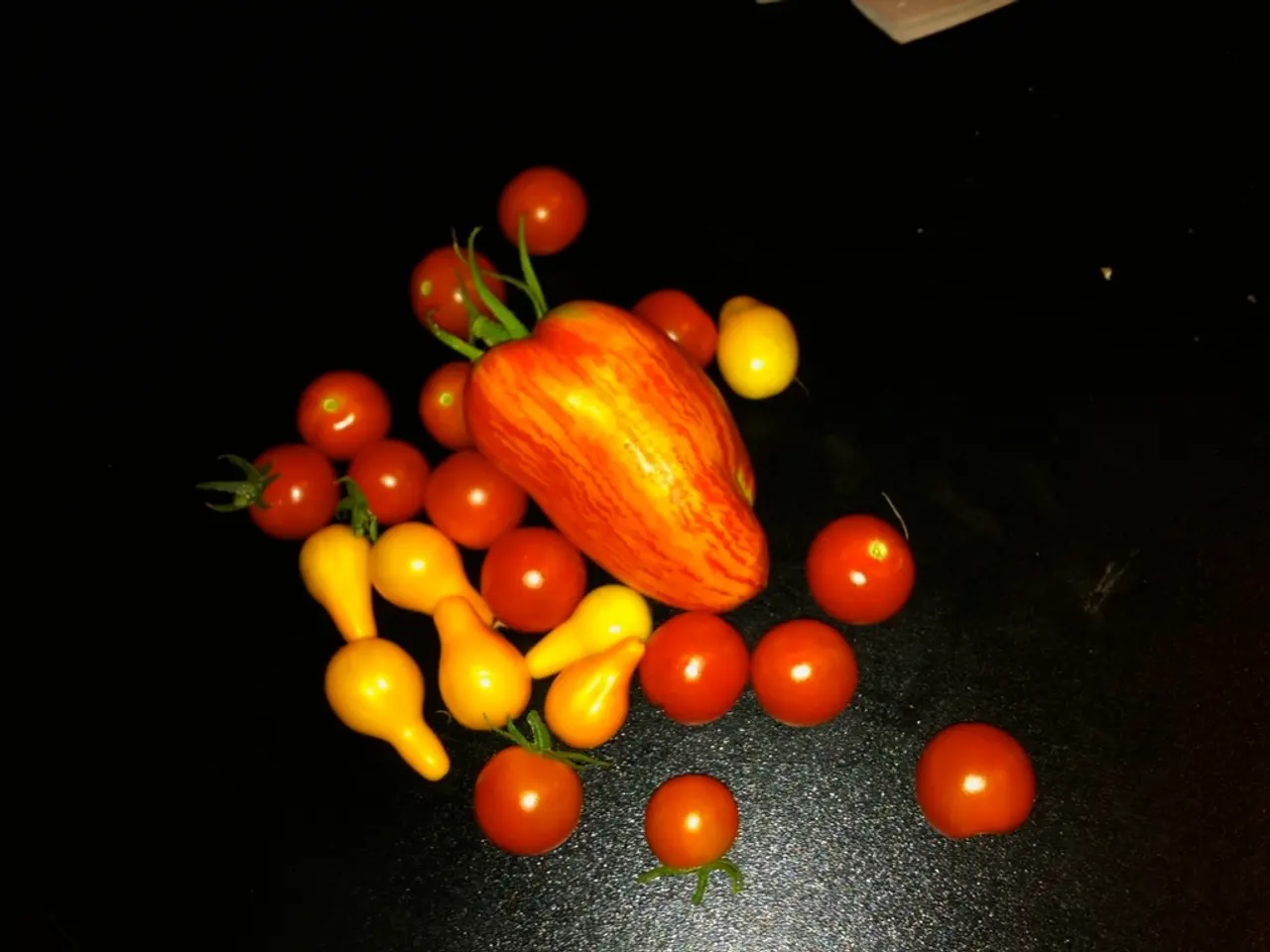Task Description: Duties for Fruit and Vegetable Management in February
February is a crucial month for garden enthusiasts, as it's a time to prepare your vegetable garden for the upcoming spring season. Here's a list of tasks to help maintain soil and tool health, and ensure a smoother and more productive growing season.
Pruning and Tidying
Late February is the ideal time to prune most shrubs and trees. This helps avoid stimulating growth that may be vulnerable to cold damage [1]. Don't forget to tidy up fallen fruit to reduce disease and pest risks next season [1].
Soil Check and Amendments
Test your soil pH and if it's below 6, apply lime at about 5 pounds per 100 square feet to improve soil health for vegetables [1].
Seed Starting and Sowing
February is a great time to begin indoor seed starting to get a jump on spring planting. Seeds like spinach and broccoli may also be started using cold frames if available. Aubergines can be sown in a greenhouse or polytunnel in February, but if growing outside, wait until March [1][4].
Mulching
Applying mulch helps protect soil from erosion and temperature extremes, suppresses weeds, and retains moisture [4]. A 5cm thick mulch of well-rotted compost should be applied around the trunk of fruit trees [1].
Caring for Fruit Trees
Suckers or shoots that have grown very low down on fruit trees should be removed. Old autumn fruiting raspberry canes should be cut back to the base. Perennial weeds growing close to the trunk of fruit trees should be removed [1].
Soft Fruit Care
Cages covered with netting can be used to protect soft fruit plants. Weeds should be removed from the base of soft fruit bushes before feeding. Fruit in pots should be watered with high potassium liquid plant food [1].
Brassica Care
Yellow leaves on brassica plants should be pulled off and discarded if showing signs of disease. Old, discarded brassica leaves should be cleared up to prevent slugs or disease [1].
Fertilising
Potassium-rich granular fertiliser should be used for soft fruit bushes. Blueberries require ericaceous fertiliser [1]. Spring cabbages can be fed with a granular high-nitrogen plant food to encourage strong growth [1].
Special Considerations
Bird prevention measures should be taken for soft fruit plants. Thick hazel stems can be used as natural plant supports for runner beans. Old Brussels sprout stems should be chopped up and added to a new compost heap [1].
Creating a Veg Patch
A veg patch can be created from a section of the lawn by lifting the grass and spreading a layer of compost. Strawberries can be forced to grow earlier by potting them up and bringing them into an unheated greenhouse, conservatory, or well-lit porch [1].
Garlic Planting
Choose the sunniest, best-draining patch of soil to plant garlic. Garlic can be planted in February, suitable for varieties such as 'Solent Wight' and 'Picardy Wight' [1].
Sign Up for Gardening Tips
Stay updated with gardening advice and inspiration by signing up for our newsletter. February offers at least a couple of days that hint at spring, prompting impulses to start planting or tidying up. Embrace the month and get ready for a bountiful growing season!
[1] RHS - The Royal Horticultural Society [4] Gardeners' World - BBC
- To prepare your 'lifestyle' for the upcoming spring season, consider starting indoor seed germination in February for vegetables like spinach and broccoli.
- After pruning shrubs and trees in late February, don't forget to tidy up your 'home-and-garden' by removing fallen fruit to reduce disease and pest risks next season.




